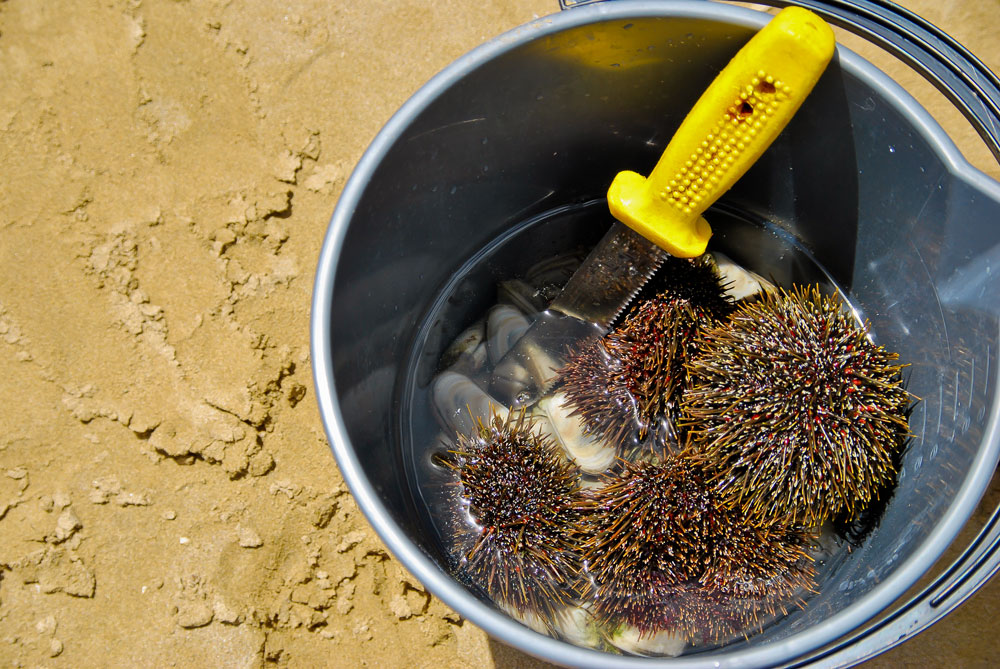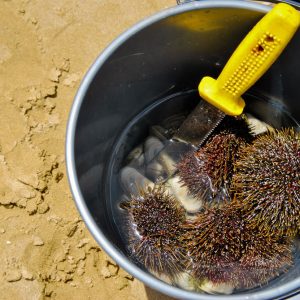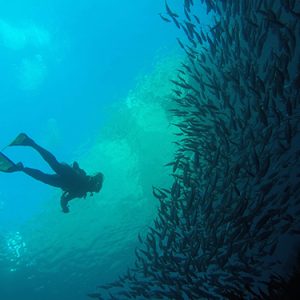Kina might not be on everyone’s list of favourite foods, yet when it comes to the marine environment they are significant indicators of how well our inshore marine ecosystem is functioning. 
Off the coast of east Northland down to the Bay of Plenty, the numbers of kina are increasing. This is bringing joy to people gathering a feed for the whānau. On the flip side, in some areas kina barrens signal an unbalanced ecosystem that needs to be restored.
Kina barrens occur as a result of harvesting large predators such as snapper and crayfish that help to keep kina numbers in check. Too many kina in one area degrades productive kelp forests and this results in a loss of habitat for other species, and biodiversity loss.
Kina barrens are more common in Northland compared to other areas. FNZ advises that grooming or rotational fishing may assist in mitigating future expansion of kina barrens in commercially fished areas.
Fisheries New Zealand (FNZ) recently reviewed the kina commercial catch limits applying between North Cape and East Cape. LegaSea worked with our fisheries experts at the New Zealand Sport Fishing Council and the New Zealand Angling & Casting Association to develop a positive response to the FNZ proposals.
We supported FNZ’s proposed catch increases, as the available science suggests that the kina population can cope with greater extraction, and because FNZ are leading the way for a kina barren management plan.
At a recent kina management workshop attended by our NZSFC fisheries experts, those present agreed that while kina removal can support kelp regrowth, it doesn’t address the underlying cause of elevated kina populations. Culling kina numbers works to a limited extent, it still means we all need to face up to the reality of why kina are so prolific, and the reasons why kina barrens are occurring in the first place.
Last year’s High Court decision in relation to crayfish management highlighted the need for fisheries managers to take into account the impacts of fishing. Not just on the target species, but also the wider effects on other species such as kina, and the marine environment.
During the Court proceedings there were interesting discussions about the increasing number of kina, and kina barrens, and the inability of small crayfish to eat these spiny creatures. Clearly there aren’t enough big crayfish and snapper feasting on kina.
The Court identified that if there was any doubt about the available information, the Minister for Oceans and Fisheries must make a precautionary decision.
We don’t always agree with FNZ’s proposals to increase commercial catch limits for inshore species. However this time we agreed, on the basis that balance is required. A modest catch increase for kina would represent a cautious approach given the likely overall numbers of kina that are currently thriving on the northeast coast.
A precautionary decision by the Minister would also complement conservation efforts by recreational fishers, who take enough for the table and put the large snapper and crayfish back in the water to graze on kina.





